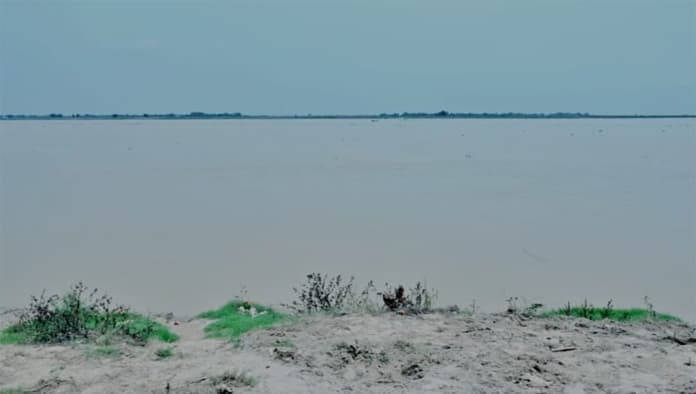Rising Water Levels in Ganga and Sone Rivers Trigger High Alert in Bihar

By Neeraj Kumar
Patna: The continuous rainfall in the Sone River basin is significantly impacting Bihar, causing a rapid rise in the water level of the Ganga River in Patna. The Ganga is now dangerously close to the red mark, and the Sone River has reached its highest level in 13 years. According to the Water Resources Department, over 150 mm of rain has fallen in the Sone’s catchment area within the last 24 hours.
Heavy rains in 11 districts of Madhya Pradesh, five districts of Chhattisgarh, and one district of Jharkhand are contributing to the increased water levels in South Bihar rivers. As a result, the Water Resources Department has issued a high alert, instructing engineers to monitor the embankments closely.
In the past 48 hours, significant rainfall in the Sone River basin has led to a record release of 5.21 lakh cusecs of water from the Indrapuri Barrage, impacting areas of South Bihar. This surge is also causing a rapid increase in the Ganga River’s water level, which had previously been well below the danger mark but has now risen significantly.

The Central Water Commission reports that while the Ganga River remains below the danger mark, it has reached 49.73 meters in Patna, just shy of the 50.60-meter danger level. At Digha Ghat in Patna, the Ganga River is at 49.54 meters, against a danger level of 50.45 meters. Meanwhile, at Gandhi Ghat, the water level is 48.52 meters, close to the 48.60-meter danger mark and continues to rise.

Water Resources Minister Vijay Kumar Chaudhary has confirmed that engineers are on high alert due to the unexpected water discharge in the Sone River, and embankments are being closely monitored. The government is prepared to handle any emergencies, and the situation remains under control for now. However, the Ganga River’s water level continues to rise due to excessive rainfall in the Sone River basin.
Floodwaters from the Sone River have already entered numerous villages in Rohtas and Aurangabad, with water discharge increasing more than 22 times in the past 36 hours, exacerbating the situation. The last significant discharge occurred in 2016, with 11.67 lakh cusecs of water causing widespread flooding in South Bihar.







